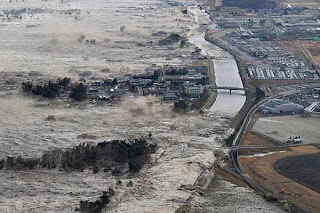WASHINGTON (AFP) - – Top NASA scientists said there was no scientific evidence to support a colleague's claim that fossils of alien microbes born in outer space had been found in meteorites on Earth.
The US space agency formally distanced itself from the paper by NASA scientist Richard Hoover, whose findings were published Friday in the peer-reviewed Journal of Cosmology, which is available free online.
"That is a claim that Mr Hoover has been making for some years," said Carl Pilcher, director of NASA's Astrobiology Institute.
"I am not aware of any support from other meteorite researchers for this rather extraordinary claim that this evidence of microbes was present in the meteorite before the meteorite arrived on Earth and and was not the result of contamination after the meteorite arrived on Earth," he told AFP.
"The simplest explanation is that there are microbes in the meteorites; they are Earth microbes. In other words, they are contamination."
Pilcher said the meteorites that Hoover studied fell to Earth 100 to 200 years ago and have been heavily handled by humans, "so you would expect to find microbes in these meteorites."
Paul Hertz, chief scientist of NASA's Science Mission Directorate in Washington, also issued a statement saying NASA did not support Hoover's findings.

"While we value the free exchange of ideas, data and information as part of scientific and technical inquiry, NASA cannot stand behind or support a scientific claim unless it has been peer-reviewed or thoroughly examined by other qualified experts," Hertz said.
"NASA also was unaware of the recent submission of the paper to the Journal of Cosmology or of the paper's subsequent publication."
He noted that the paper did not complete the peer-review process after being submitted in 2007 to the International Journal of Astrobiology.
According to the study, Hoover sliced open fragments of several types of carbonaceous chondrite meteorites, which can contain relatively high levels of water and organic materials, and looked inside with a powerful microscope, Field Emission Scanning Electron Microscopy (FESEM).
He found bacteria-like creatures, calling them "indigenous fossils" that originated beyond Earth and were not introduced here after the meteorites landed.
Hoover "concludes these fossilized bacteria are not Earthly contaminants but are the fossilized remains of living organisms which lived in the parent bodies of these meteors, e.g. comets, moons and other astral bodies," said the study.
"The implications are that life is everywhere, and that life on Earth may have come from other planets."
The journal's editor-in-chief, Rudy Schild of the Harvard-Smithsonian Center for Astrophysics, hailed Hoover as a "highly respected scientist and astrobiologist with a prestigious record of accomplishment at NASA."
The publication invited experts to weigh in on Hoover's claim, and both sceptics and supporters began publishing their commentaries on the journal's website Monday.
"While the evidence clearly indicates that the meteorites was eons ago populated with bacterial life, whether the meteorites are of actual extra-terrestrial origin might debatable," wrote Patrick Godon of Villanova University in Pennsylvania.
Michael Engel of the University of Oklahoma wrote: "Given the importance of this finding, it is essential to continue to seek new criteria more robust than visual similarity to clarify the origin(s) of these remarkable structures."
The journal did not immediately respond to requests for comment.
Pilcher described Hoover as a "NASA employee" who works in a solar physics branch of a NASA lab in the southeastern state of Alabama.
"He clearly does some very interesting microscopy. The actual measurements on these meteorites are very nice measurements, but I am not aware of any other qualification that Mr Hoover has in analysis of meteorites or in astrobiology," Pilcher said.
A NASA-funded study in December suggested that a previously unknown form of bacterium, found deep in a California lake, could thrive on arsenic, adding a new element to what scientists have long considered the six building blocks of life.
That study drew hefty criticism, particularly after NASA touted the announcement as evidence of extraterrestrial life. Scientists are currently attempting to replicate those findings.
source : Yahoo! News
















